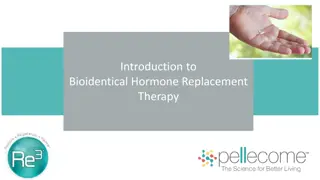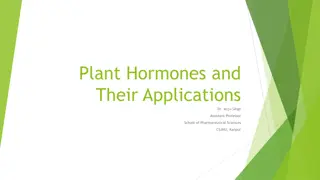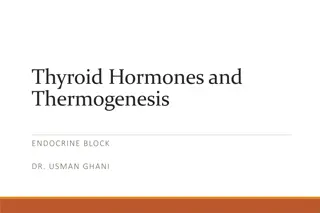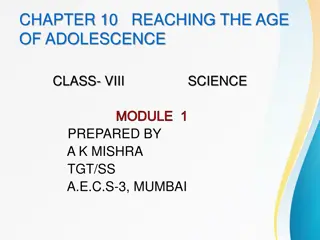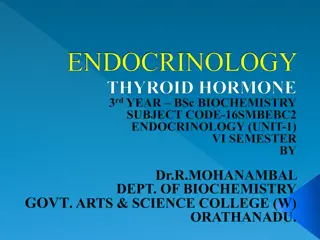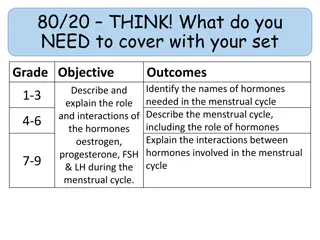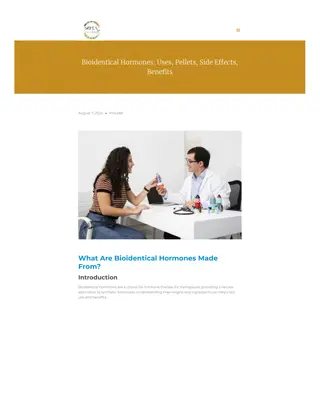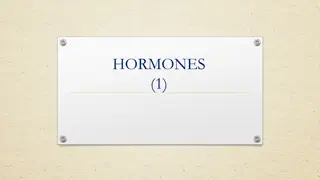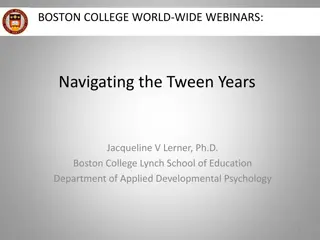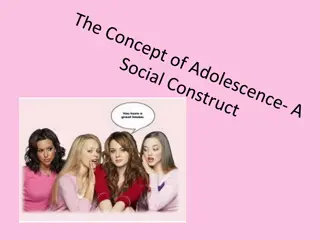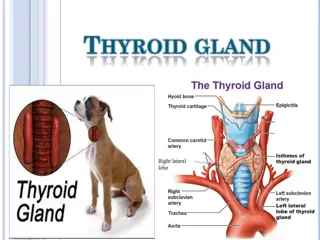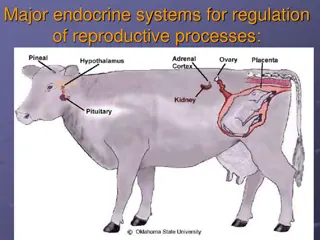Understanding Hormones and Reproductive Changes in Adolescence
Changes during adolescence are driven by hormones like testosterone in boys and estrogen in girls, leading to physical developments such as facial hair growth and breast development. Hormones play a crucial role in initiating reproductive functions, with endocrine glands releasing hormones to target sites in the body. Adolescents become capable of reproduction as their testes and ovaries start producing gametes, marking the onset of the reproductive phase of life. In females, this phase typically begins at puberty and lasts until around 45-50 years of age, characterized by the maturation and release of ova.
Download Presentation

Please find below an Image/Link to download the presentation.
The content on the website is provided AS IS for your information and personal use only. It may not be sold, licensed, or shared on other websites without obtaining consent from the author. Download presentation by click this link. If you encounter any issues during the download, it is possible that the publisher has removed the file from their server.
E N D
Presentation Transcript
CHAPTER 10 : REACHING THE AGE OF ADOLESCENCE CLASS VIII SCIENCE MODULE 3 PREPARED BY A K MISHRA TGT/SS A E C S- 3, MUMBAI
HORMONES The changes which occur at adolescence are controlled by hormones. Hormones are chemical substances secreted by endocrine glands or endocrine system. The male hormone or testosterone begins to be released by the testes at onset of puberty.
* This causes changes in boys about such as the growth of facial hair. * Once puberty is reached in girls, ovaries begin to produce the female hormone or estrogen which makes the breasts develop.
* Milk secreting glands or mammary glands develop inside the breasts. * The production of these hormones is under the control of another hormone secreted from an endocrine gland called pituitary gland.
Role of Hormones in Initiating Reproductive function
Endocrine glands release hormones into the bloodstream to reach a particular body part called target site. The target site responds to the hormones. There are many endocrine glands or ductless glands in the body.
REPRODUCTIVE PHASE OF LIFE IN HUMANS Adolescents become capable of reproduction when their testes and ovaries begin to produce gametes. * The capacity for maturation and production of gametes lasts for a much longer time in males than in females.
* In females, the reproductive phase of life begins at puberty (10 to 12 years of age) and generally lasts till the age of approximately 45 to 50 years. * The ova begin to mature with the onset of puberty. * One ovum matures and is released by one of the ovaries once in about 28 to 30 days.
* During this period, the wall of the uterus becomes thick so as to receive the eggs, in case it is fertilised and begins to develop. * This results in pregnancy. * If fertilisation does not occur, the released eggs, and the thickened
lining of the uterus along with its blood vessels are shed off. * This causes bleeding in women which is called menstruation. * Menstruation occurs once in about 28 to 30 days.
* The first menstrual flow begins at puberty and is termed menarche . * At 45 to 50 years of age, the menstrual cycle stops. * Stoppage of menstruation is termed menopause. * Initially, menstrual cycle may be irregular. It take some time to become
regular. * Menstrual cycle is controlled by hormones. * The cycle includes the maturation of the egg, its release, thickening of uterine wall and its breakdown if pregnancy does not occur.
* In case the egg is fertilised it begins to divide and then gets embedded in the uterus for further development.
HOW IS THE SEX OF THE BABY DETERMINED
BOY OR GIRL ? Inside the fertilised egg or zygote is the instruction for determining the sex of the baby. This instruction is present in the thread like structures, called chromosomes. All human beings have 23 pairs of chromosomes in the nuclei of their cells. Two chromosomes out of these are the sex chromosomes ,named X and Y.
A female has two X chromosomes ,while a male has one X and one Y chromosomes. The gametes have only one set of chromosomes. The unfertilised egg always has one X chromosome, but sperms are of two kinds. One kind has an X chromosome ,and the other kind has a Y chromosome.
* When a sperm containing X chromosome fertilises the egg, the zygote would have two X chromosomes and develop into a female child. * If the sperm contributes a Y chromosome to the egg (ovum) at
fertilisation , the zygote would develop into a male child.
END OF MODULE 3 THANK YOU




